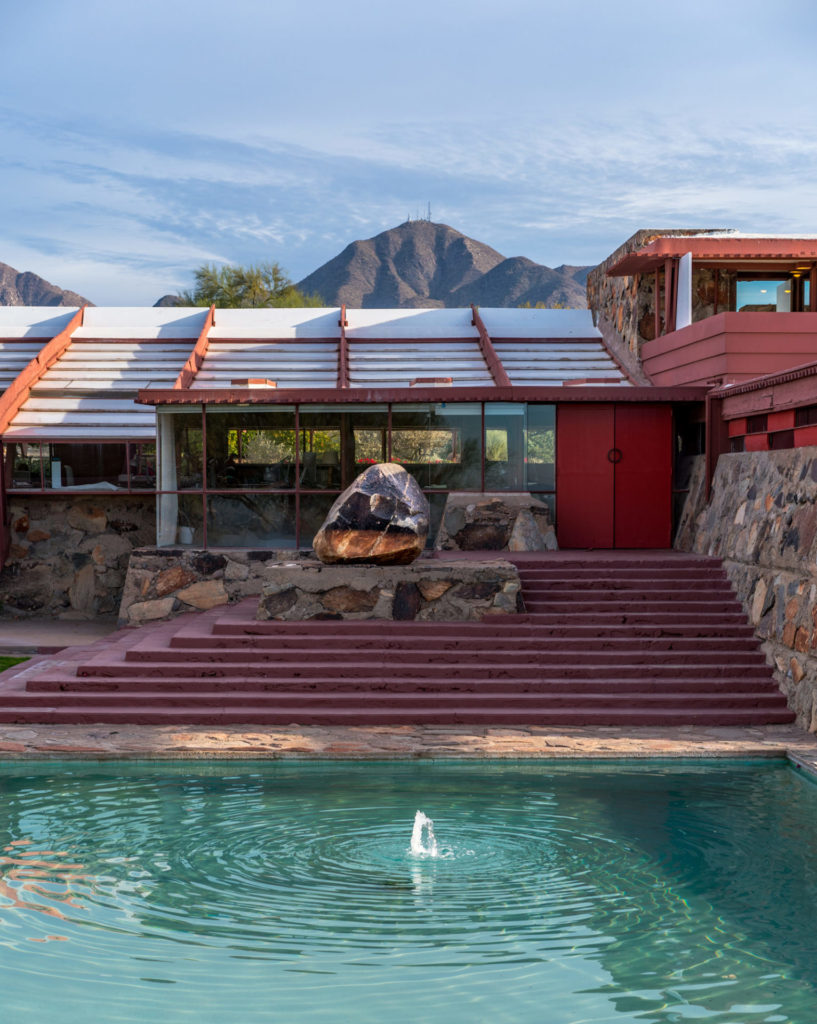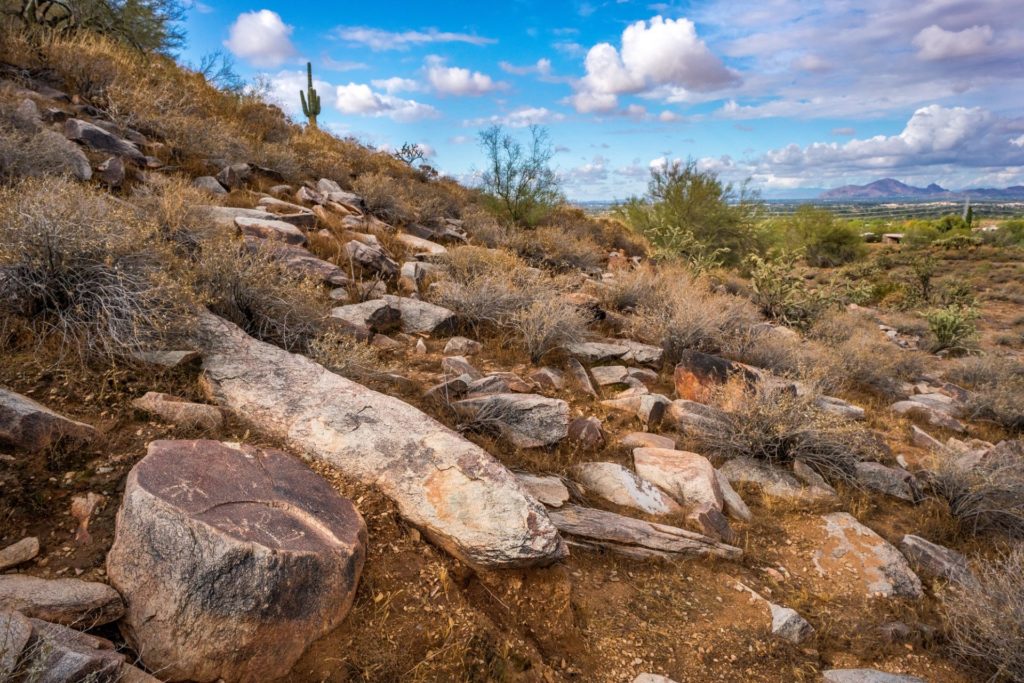- Home
- >
- Preservation Archaeology Blog
- >
- Standing on the Shoulders of Giants
(July 28, 2020)—Several years ago, I shared the research I was carrying out on the petroglyphs at Taliesin West, acclaimed architect Frank Lloyd Wright’s winter home in Scottsdale, Arizona. One reader pointed out the troubling fact that Mr. Wright had the boulders moved and rearranged into Taliesin West.
That is true. And that is what I found most intriguing about the situation—not the petroglyphs per se, but how Mr. Wright and his students treated the petroglyphs. Coming from a preservation paradigm, this was certainly new territory for me. Seeing how the Frank Lloyd Wright Foundation at Taliesin West is also concerned with preservation—Taliesin West, after all, has long been a National Historic Landmark and was recently added to UNESCO’s List of World Heritage Sites—this was seemingly new ground for them, as well.
I did not reply to the reader’s concern at the time, because their important point was actually the major issue I was addressing in the research. With that, I’m glad to finally share that my study, entitled “The Stones of Taliesin West: Frank Lloyd Wright and the Petroglyphs of Paradise Valley,” has finally been published by the Journal of the Southwest. You can read the article here.

To recap: I conducted this study at the request of the Frank Lloyd Wright Foundation. Their CEO Stuart Graff found my book on South Mountain petroglyphs in the Heard Museum’s gift shop. As Stuart told me, the topic of petroglyphs had been on his mind since taking on the role of CEO, as nothing substantive had been written about this little-known aspect of Taliesin West and Frank Lloyd Wright more broadly. That I share a last name with the esteemed architect was too much of a coincidence to ignore.
The Foundation invited me to Scottsdale to take a tour of Taliesin West, and I was honored to do so. A childhood visit to Fallingwater in Pennsylvania, and the place’s overt references to Transcendentalism, had a profound effect on my adolescent development, but I’d had limited exposure to Mr. Wright’s works and thinking since then. Taliesin West was a much-needed and appreciated refresher.
While on the tour, I listened and I experienced, I sat in chairs where fabled architects once sat, and I learned a lot. The tour guides are knowledgeable, fun, and all-around nice people. But I kept coming back to how the petroglyph boulders had been, in effect, harvested and repurposed. It was utterly alien to me, and I admit it was oddly painful.
What I struggled with most was reconciling what I understood of Frank Lloyd Wright’s principles of organic architecture with the respect and reverence I’ve learned to have for petroglyphs. My research has convinced me that the places where they are found are as important as the imagery, and I’ve learned from talking with descendent communities that petroglyphs are very, very special…English words can’t truly capture their significance.

So, the article I wrote addresses two primary issues. One is a quintessentially archaeological one: Why are the petroglyphs located at Taliesin West? There, I expand on recent research I and others have conducted on Hohokam petroglyphs and Hohokam history in the Paradise Valley. That was the easy part.
The second significant issue I address—the point I alluded to above—was more of a challenge, because I had not yet needed to confront the underlying premise. I had to ask myself why what happened with the petroglyphs at Taliesin West troubled me. Rather than merely feeling this, I had to dig deeper to understand why I felt the way I did, and why others may not see it in the same light.
One of the virtues of Preservation Archaeology is that it makes you reflect on the impacts you have not only on artifacts and archaeological sites, but also on the people today who identify most strongly with those materials and places. And through my study at Taliesin West, I learned about so many things—archaeology, Frank Lloyd Wright, historic preservation, Hohokam, descendant communities, colonialism, cultural appropriation, and where I fit into all of that.
I actually wrote the recently published article two years ago (publication can be a slow process). At that time, I wasn’t sure how my thoughts would fall on others’ ears, especially those who hold Frank Lloyd Wright is such high regard. It’s difficult to be critical of such a revered (inter)national figure, and who am I to criticize? Yet, in light of the current social climate circulating around monuments and the complicated narratives that arise from the fact that there is not yet a universally shared national history, I believe the issues and questions I raise near the end of the article are timely and needed. It is in the context of “unsettling truths” about a dysfunctional imagination of Euro-American exceptionalism, to borrow the phraseology and perspective of Native activist and author Mark Charles, that I share this research.